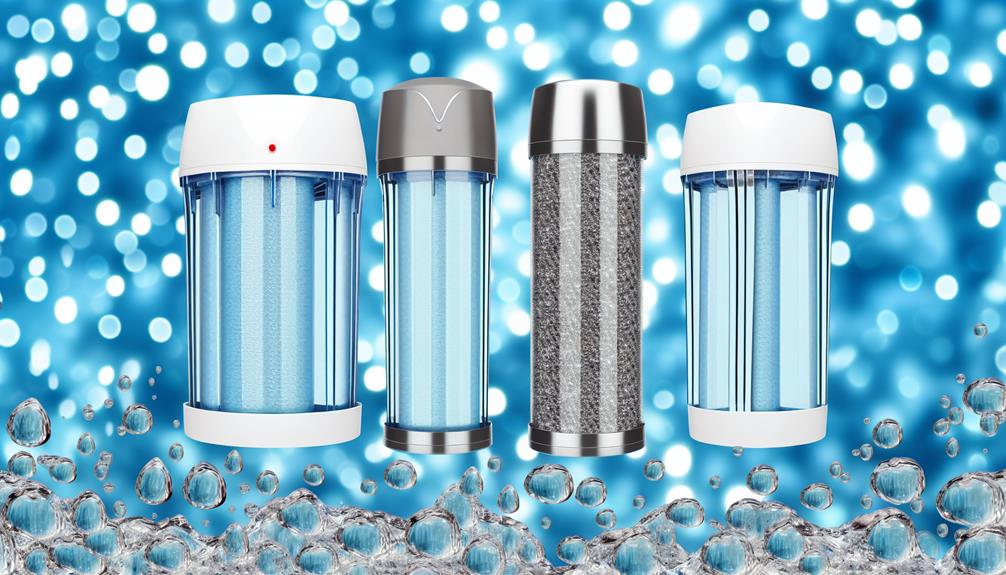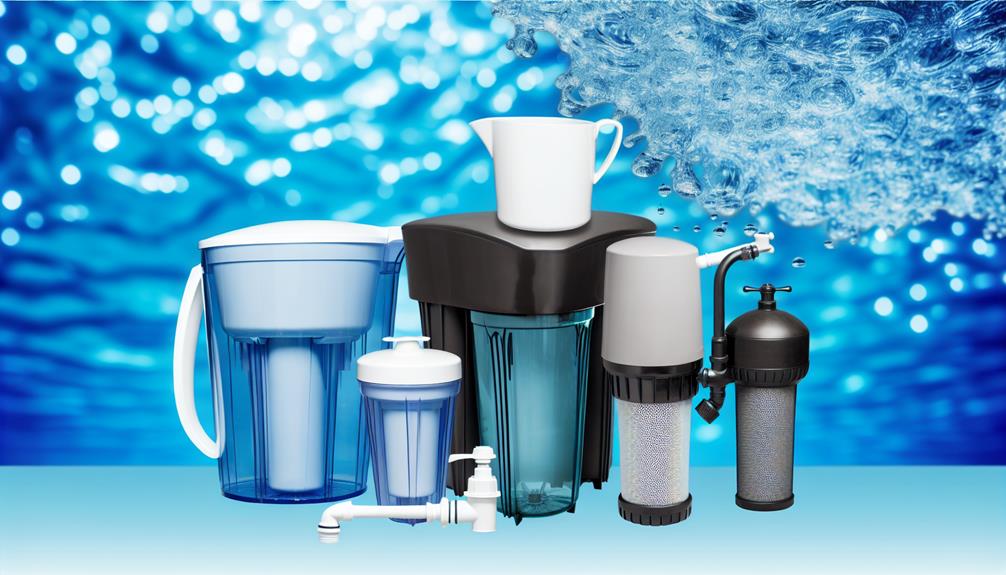Imagine a serene landscape where crystal-clear water trickles through layers of natural sediment, emerging pure and invigorating on the other side. You're aware that water is the lifeblood of our planet, yet its purity is under constant threat from pollutants and contaminants.
In your quest for sustainability, you've likely pondered over how to reconcile the need for clean water with the imperative to protect the environment. Eco-friendly water purification stands out as a beacon of hope, harnessing the power of natural removal techniques to offer solutions that are as kind to the earth as they are effective.
From the intricate dance of sunlight rendering pathogens harmless to the silent efficiency of sand and gravel beds capturing unwanted particles, these methods whisper the secrets of a greener future.
As you consider your impact on the world's most vital resource, you're invited to explore the intersection of necessity and ingenuity where modern problems meet ancient wisdom. What might you discover in this harmonious blend of technology and nature?
Solar Disinfection Basics
Harnessing the power of sunlight, solar disinfection, or SODIS, offers an accessible and low-cost method to purify water by effectively eliminating pathogens. As a sustainable water purification approach, SODIS leverages UV light's natural disinfectant properties to render contaminated water safe for drinking. The process entails filling clear plastic bottles with water and exposing them to direct sunlight. The UV water treatment occurs over a span of 6 hours under full sun, extending to 48 hours during overcast conditions, ensuring a thorough pathogen kill rate.
The mechanism underlying solar disinfection basics hinges on the dual action of UV light and increased temperature. UV-A rays (315-400 nm) penetrate the water, damaging the DNA and RNA of bacteria, viruses, and parasites, which inhibits their ability to replicate. Concurrently, the greenhouse effect inside the bottle raises water temperatures, contributing to the inactivation of pathogens.
To maximize efficiency, bottles should be placed on reflective surfaces and not overcrowded. While SODIS is an environmentally friendly and effective method to purify water, it's advisable to combine it with other water purification methods for a comprehensive defense against a broad spectrum of contaminants. This stratagem ensures that you're employing a holistic approach to achieve safe drinking water via natural removal techniques.
Constructed Wetlands Filtration
Constructed wetlands filtration employs engineered ecosystems to effectively reduce pollutants, such as bacteria, nutrients, and heavy metals, from water through natural processes. These systems are designed to mimic natural wetlands, utilizing plants, microorganisms, and soil interactions to remove contaminants and improve water quality. As a sustainable method, constructed wetlands filtration harnesses natural resources to create water purification systems that not only treat water but also contribute to wildlife habitat and landscape restoration.
Analyzing the data, these systems show a significant decrease in common pollutants. For instance, bacteria levels are often reduced through natural predation and filtration, while nutrient loads, such as nitrogen and phosphorus, are absorbed by plants or transformed by microbial activity, thus preventing eutrophication. Heavy metals are stabilized in the soil or taken up by vegetation, mitigating their toxicity.
Adopting such water treatment methods translates to lower energy and chemical usage compared to conventional water purification systems. This sustainability aspect is crucial, as constructed wetlands support ecological balance while providing a viable solution for water treatment. As you consider water purification options, remember that constructed wetlands filtration isn't only natural but also a testament to innovative use of natural water treatment techniques.
Sand and Gravel Purification
While constructed wetlands filtration leverages biological processes, sand and gravel purification relies on the physical stratification of materials to sift out impurities from water. This water purification method is essential within water purification systems, especially in regions where access to clean drinking water is scarce.
The technical process involves water percolating through various layers of sand and gravel, which have different pore sizes. These layers effectively remove particles based on size exclusion and, to some extent, the adsorption of contaminants onto the media. The analytical data show that:
- The larger gravel layers capture bigger sediments and act as a pre-filter.
- Finer sand layers remove smaller particles, including some pathogenic microorganisms.
- Regular maintenance ensures the longevity and efficiency of the filtration system.
Water filtration systems employing sand and gravel are praised for their simplicity and efficiency. They complement other water purifiers and can be tailored to treat a wide range of water sources.
When discussing purification techniques, it's essential to note the adaptability of sand and gravel systems to both small-scale household needs and larger community-based applications. This robust water purification technique serves as a cornerstone in the quest for universally accessible clean water.
Bamboo Charcoal Adsorption
Bamboo charcoal, when used as an adsorbent, effectively traps contaminants such as lead and chlorine from water, offering a sustainable purification option. Unlike traditional activated carbon derived from non-renewable sources, bamboo charcoal is produced from natural materials, ensuring an eco-friendly approach to efficient water treatment. Its porous structure allows for a high adsorption capacity, making it ideal for use in carbon filters within water purification systems.
The technical advantage of bamboo charcoal over conventional carbon filter options lies in its ability to remove pollutants without releasing harmful byproducts. The adsorption process is facilitated by the large surface area that comes into contact with water, capturing heavy metals and organic compounds. This interaction is further enhanced in the presence of Carbon dioxide, which can be used to activate the bamboo charcoal, increasing its porosity and surface area.
As a renewable resource, bamboo charcoal not only excels in removing impurities from drinking water but also contributes to sustainable practices. After its lifecycle in water purification systems, it can be recycled, reducing waste and promoting a circular economy. Its effectiveness in eradicating a broad spectrum of contaminants positions bamboo charcoal as a pivotal component in the future of eco-conscious water purification solutions.
Plant-Based Biofiltration Techniques
Harnessing the innate filtering capabilities of plants, plant-based biofiltration techniques offer a low-cost and eco-friendly alternative for removing water contaminants. These natural filters are gaining attention for their ability to remove a wide range of pollutants with minimal environmental impact. Sustainable Water Treatment strategies, including the use of plant-based biofiltration, are crucial in areas of the world lacking access to conventional water systems.
Consider the following advantages of plant-based biofiltration:
- *Ceramic water filters* infused with plant materials are highly effective in removing turbidity and harmful microorganisms.
- The materials used in biofilters are often locally sourced, reducing carbon footprints and fostering self-reliant communities.
- These techniques replenish ecosystems, supporting biodiversity while purifying water.
Analyzing the efficacy of these plant-based methods reveals that they're capable of removing contaminants such as heavy metals and pathogens. For instance, moringa oleifera seeds can clarify and disinfect water, addressing the critical need for safe drinking water in underserved regions. Furthermore, biofiltration isn't only about the removal of pollutants but also about the regeneration of water quality, making it a cornerstone of holistic water purification practices.

